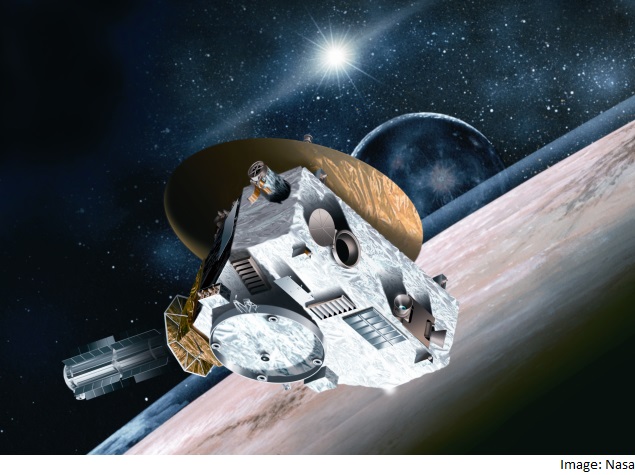- Home
- Science
- Science News
- Nasa's New Horizons Spacecraft Confirms Presence of Methane on Pluto
Nasa's New Horizons Spacecraft Confirms Presence of Methane on Pluto

The Earth-based astronomers first observed Methane on Pluto in 1976.
"We already knew there was methane on Pluto but these are our first detections," said Will Grundy, team leader with the Lowell Observatory in Flagstaff, Arizona.
Soon, we will know if there are differences in the presence of methane ice from one part of Pluto to another, he added in a statement.
New Horizons is now about 16 million km from the Pluto system - around 4.75 billion km from the Earth.
Methane was detected by a team of ground-based astronomers led by New Horizons team member Dale Cruikshank of Nasa's Ames Research Center, Mountain View, California.
The detection was made possible by the help from the infrared spectrometer on New Horizons spacecraft.
Methane is an odourless, colourless gas that is present underground and in the atmosphere on the Earth.
On Pluto, methane may be primordial, inherited from the solar nebula from which the solar system formed 4.5 billion years ago.
Just hours after its flyby of Pluto on July 14, the spacecraft will observe sunlight passing through the planet's atmosphere, to help scientists determine the atmosphere's composition.
"It will be as if Pluto were illuminated from behind by a trillion-watt light bulb," noted New Horizons scientist Randy Gladstone.
The spacecraft is healthy and all systems are operating normally.
"We are really on the final path. It just gets better and more exciting every day," said project manager Glen Fountain.
Catch the latest from the Consumer Electronics Show on Gadgets 360, at our CES 2026 hub.
Related Stories
- Samsung Galaxy Unpacked 2025
- ChatGPT
- Redmi Note 14 Pro+
- iPhone 16
- Apple Vision Pro
- Oneplus 12
- OnePlus Nord CE 3 Lite 5G
- iPhone 13
- Xiaomi 14 Pro
- Oppo Find N3
- Tecno Spark Go (2023)
- Realme V30
- Best Phones Under 25000
- Samsung Galaxy S24 Series
- Cryptocurrency
- iQoo 12
- Samsung Galaxy S24 Ultra
- Giottus
- Samsung Galaxy Z Flip 5
- Apple 'Scary Fast'
- Housefull 5
- GoPro Hero 12 Black Review
- Invincible Season 2
- JioGlass
- HD Ready TV
- Laptop Under 50000
- Smartwatch Under 10000
- Latest Mobile Phones
- Compare Phones
- Honor Win RT
- Honor Win
- Xiaomi 17 Ultra Leica Edition
- Xiaomi 17 Ultra
- Huawei Nova 15
- Huawei Nova 15 Pro
- Huawei Nova 15 Ultra
- OnePlus 15R
- Asus ProArt P16
- MacBook Pro 14-inch (M5, 2025)
- OPPO Pad Air 5
- Huawei MatePad 11.5 (2026)
- Xiaomi Watch 5
- Huawei Watch 10th Anniversary Edition
- Acerpure Nitro Z Series 100-inch QLED TV
- Samsung 43 Inch LED Ultra HD (4K) Smart TV (UA43UE81AFULXL)
- Asus ROG Ally
- Nintendo Switch Lite
- Haier 1.6 Ton 5 Star Inverter Split AC (HSU19G-MZAID5BN-INV)
- Haier 1.6 Ton 5 Star Inverter Split AC (HSU19G-MZAIM5BN-INV)

















